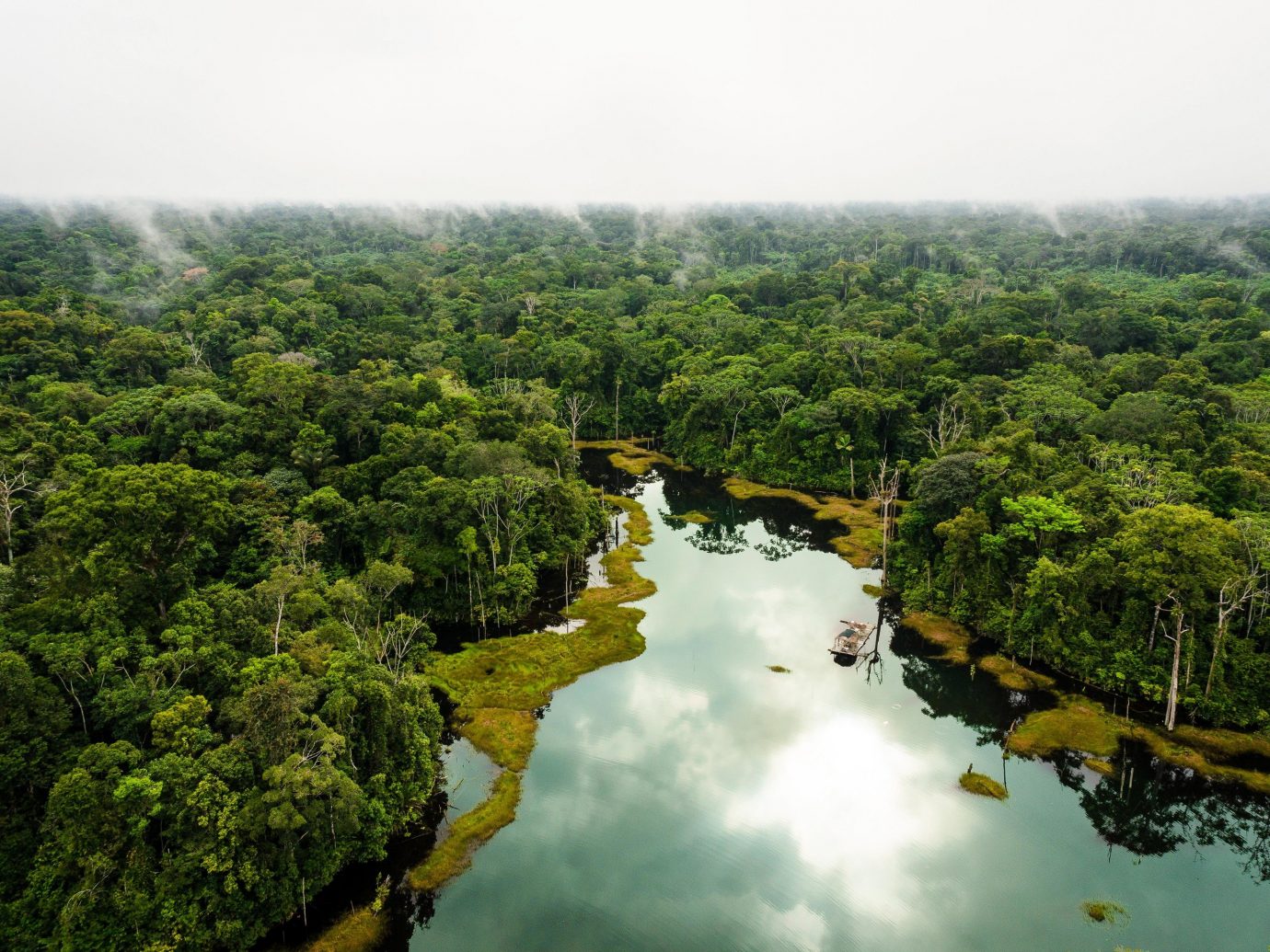Amazonian forests are unlikely to provide enough timber to meet current demand over the long term, even with the use of improved logging practices.
That is a key finding of a new study led by the Tropical managed Forests Observatory (TmFO), published today in Environmental Research Letters.
Dr Camille Piponiot, junior scientist from the University of French Guiana, is the study’s lead author. She explained: “In the Amazon Basin, around 20 per cent of the total forest area is used for timber production. This is usually done through selective harvest of a few trees per hectare, followed by regrowth.
“Selective logging provides income and employment and allows the forest to retain most of the carbon stocks and biodiversity of old-growth forests. But with 30 million cubic metres of sawlogs being extracted from the Amazon’s 108 million hectares of natural production forests each year, decisions about the management of these production forests are of major importance.”
The Amazon rainforest spreads across nine countries, namely Brazil, Ecuador, Venezuela, Suriname, Peru, Colombia, Bolivia, Guyana, and French Guiana, making the concerted management of wood resources difficult in the region.
Senior author Dr Bruno Hérault, from the French Agricultural Research Centre for International Development (Cirad), explained: “Many Amazonian countries have passed regulations for maximum logging intensities and minimum time intervals between harvests, to avoid depletion of timber stocks. But these national regulations are insufficient. Typically, the minimum time timber stocks are assumed to recover to pre-harvesting levels are 20 to 35 years, despite substantial evidence that without strong limits on logging intensities, this is not long enough to be sustainable.”
The research team used computer modelling to examine the timber sustainability levels under five different logging intensity and timber regrowth scenarios: an average logging intensity scenario with a standard 30-year cutting cycle; a low-intensity scenario with a 30-year cutting cycle; a high-intensity scenario with a 30-year cutting cycle; a short-cycle (15 years) scenario, with an average logging intensity; and a long-cycle (65 years) scenario, with an average logging intensity.
Dr Piponiot said: “Our results show that with current cutting cycles and logging intensities, forest regrowth is too slow to recover timber stocks. The light scenarios (low intensity and long cutting cycles) do not provide enough timber and the heavy scenarios are not sustainable, as they do not allow volume recovery during a cutting cycle.”
[rand_post]
With ongoing climate changes, the picture would get even worse. Dr Hérault said: “In Amazonia, climate changes would lead to more frequent and severe droughts and wildfire events due to drier and hotter conditions. This would lead to increased tree mortality, especially of large trees (loggers’ main target) that are particularly sensitive to intense droughts. Timber stocks are therefore likely decreasing in Amazonian production forests, even when loggers comply with official regulations.”
Co-author Dr Plinio Sist, leader of the Tropical managed Forests Observatory, said: “These results highlight the need for a re-evaluation of the strategy for future timber provision in Amazonia. We are in a period of transition that requires important forest policy decisions to promote diversification of timber sources, and a substantial shift in the objectives of Amazonian production forest management.”
